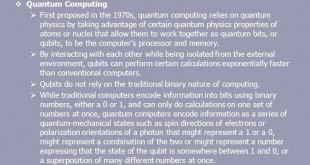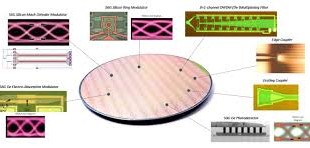In the intricate world of quantum technologies—where controlling particles at the atomic level defines progress—the unsung heroes are often the tools that make such precision possible. Among these, multi-channel tunable laser systems, particularly External Cavity Diode Lasers (ECDLs), stand out as the backbone of innovation. These systems—particularly External Cavity Diode Lasers (ECDLs)—are meticulously engineered to deliver ultra-precise frequency control, high stability, and versatile functionality, making them indispensable for exploring and developing quantum systems. These systems are not just lab equipment; they are the linchpin enabling breakthroughs in quantum communication, computing, sensing, and beyond. Here’s how they are reshaping the future of quantum research
Quantum technologies rely on manipulating atoms, ions, or photons with extraordinary accuracy. Whether it’s entangling qubits for a quantum computer, distributing unbreakable encryption keys, or measuring time to within a billionth of a second, scientists need lasers that can be finely tuned to specific wavelengths—and stay stable. Enter ECDLs: versatile, ultra-precise tools designed to meet these exacting demands.
Inside the Technology: How Tunable Lasers Work
At the heart of tunable laser systems used in quantum optics is the External Cavity Diode Laser (ECDL) architecture. An ECDL extends the coherence and wavelength selectivity of a standard laser diode by incorporating an external optical cavity—typically involving a diffraction grating, etalon, or interference filter—to selectively feed back specific wavelengths of light into the laser diode. This feedback mechanism enhances spectral purity and allows precise control over the emission wavelength.
What Are External Cavity Diode Lasers (ECDLs)?
Unlike standard diode lasers, ECDLs incorporate an external optical cavity—such as a diffraction grating or mirror—that refines their spectral output. This setup enables precise wavelength tuning across a broad spectrum, typically ranging from 650 to 1100 nm, allowing researchers to match specific atomic transitions like those in rubidium or cesium. Moreover, ECDLs achieve ultra-narrow linewidths, often reducing phase noise to below 100 kHz, which is crucial for coherent quantum operations. These systems also offer excellent output stability, maintaining both power and frequency consistency even in noisy environments. In essence, ECDLs act as precision scalpels in the quantum world, empowering scientists to manipulate quantum states with minimal disruption to surrounding systems.
Tuning in ECDLs is accomplished using several methods. Mechanical adjustments, such as rotating the diffraction grating or filter, allow coarse wavelength changes. Fine-tuning is achieved through current and temperature modulation of the laser diode. For rapid and precise scanning, piezoelectric or electro-optic actuators are employed. The laser cavity can be configured in Littrow or Littman-Metcalf geometries, depending on the required balance between simplicity and beam pointing stability during tuning.
Why Multi-Channel Systems?
Modern quantum laboratories frequently run complex experiments that demand simultaneous control of multiple quantum systems. A multi-channel ECDL platform integrates several tunable lasers within a single system, enabling parallel experimentation. This means a lab can perform quantum communication tests while simultaneously calibrating quantum sensors or cooling atoms, all without needing to reconfigure hardware.
Multi-channel ECDL systems integrate multiple independently tunable lasers into a single stabilized platform. These systems offer shared thermal management, optical isolation, and digital control interfaces, enabling precise and flexible operation. Such platforms deliver narrow linewidths often reaching the kilohertz range, broad tuning spans across visible and near-infrared wavelengths, high output powers of several hundred milliwatts, and advanced capabilities like phase-locked and frequency-locked operation. Together, these features make ECDLs vital for applications in spectroscopy, laser cooling, quantum state control, and optical frequency metrology.
What Makes Tunable Lasers Essential in Quantum Research?
Quantum research relies heavily on lasers that can interact with atomic, ionic, or molecular systems at specific, ultra-narrow optical transitions. Whether initializing a qubit, cooling atoms to near absolute zero, or measuring physical constants through atomic interferometry, high-performance lasers serve as the foundational interface. ECDLs, with their exceptional spectral coherence, tunability, and power stability, enable experiments requiring Doppler-free spectroscopy, laser trapping, and quantum state preparation with remarkable precision.
In multi-channel configurations, these systems allow researchers to simultaneously address different atomic transitions or operate across parallel experimental setups. For example, one laser channel might be used for cooling, another for trapping, and a third for state readout—all precisely tuned and synchronized. This level of modularity and precision is essential for pushing the boundaries of research in quantum communication, quantum computing, quantum sensing, and next-generation metrology.
Platforms for a Quantum-Ready Future
Modern tunable laser platforms are engineered for high performance, reliability, and ease of integration into quantum lab environments. Many of these systems are designed as rack-mounted modules, enabling quick deployment and straightforward maintenance. Each channel within these systems is optimized for frequency stability, rapid tuning, and long-term operation. They often include features like auto-locking to atomic or molecular reference lines, compatibility with optical frequency combs, and built-in mechanisms for power and polarization stabilization.
Moreover, these platforms come equipped with user-friendly digital control interfaces that support integration with automation environments using LabVIEW, Python, or RESTful APIs. This programmability is critical for labs conducting complex, high-throughput experiments where timing and precision must be orchestrated with minimal manual intervention.
These platforms also support wavelength multiplexing, transmitting multiple quantum signals over a single fiber or free-space channel to enhance communication efficiency. Additionally, they reduce cost and save space by replacing bulky standalone units with compact, integrated systems. A prime example is TOPTICA Photonics’ DL Pro series, which combines up to eight independently tunable lasers, giving researchers the flexibility to address diverse quantum experiments such as ion control and entangled photon generation—all from one integrated source.
Applications: Where ECDLs Shine
Quantum Communication
In the realm of quantum communication, ECDLs are essential for generating precise wavelengths used in Quantum Key Distribution (QKD). Companies like ID Quantique utilize tunable lasers to produce entangled photon pairs at 1550 nm, a wavelength well-suited for telecom infrastructure. These systems support simultaneous QKD and classical data transmission, a critical capability for the emerging quantum internet.
Quantum Computing
Quantum computers based on trapped ions, such as those developed by Quantinuum and IonQ, rely on ECDLs for a variety of tasks including cooling ions and executing logic gates. For example, a 729 nm ECDL is used to stabilize calcium ions with sub-Hertz linewidths, resulting in gate fidelities exceeding 99.9%. Multi-channel systems allow for the simultaneous control of ion arrays, advancing the scalability of quantum processors.
Real-World Use Case: Optical Tweezer Arrays at Pasqal
A compelling example of multi-channel ECDL platform deployment can be found in Pasqal’s neutral-atom quantum processors. These processors utilize optical tweezers, created and controlled by precisely tuned lasers, to trap and manipulate hundreds of individual atoms in configurable 2D or 3D arrays. Different laser channels are employed to perform separate tasks—cooling, trapping, excitation to Rydberg states, and qubit manipulation. Timing and spectral control at the nanosecond level is crucial for achieving high-fidelity quantum operations. The robustness, stability, and scalability of Pasqal’s ECDL-based systems form the technological backbone of its hardware platform, demonstrating the indispensable role these laser systems play in quantum information processing.
Quantum Metrology
Precision measurement tools like atomic clocks and gravimeters require lasers with unparalleled stability. The HÜBNER C-WAVE tunable laser, known for its linewidth below 1 MHz, is instrumental in powering strontium lattice clocks—devices capable of losing less than a second over 15 billion years.
Quantum Sensing
In quantum sensing, particularly in systems using nitrogen-vacancy (NV) centers in diamonds, ECDLs emitting at 532 nm are used to initialize spin states. Multi-channel configurations enhance these setups by allowing simultaneous spin control and readout, which leads to improved spatial resolution for nanoscale magnetic field imaging.
Engineering Challenges and Solutions
Stability in Harsh Conditions
Quantum research often occurs in environments susceptible to vibrations and thermal fluctuations. Companies like M Squared Lasers have developed active feedback systems that stabilize ECDL performance using atomic references or optical cavities. These systems maintain accuracy even on mobile platforms such as airborne quantum sensors.
Scalability
As quantum experiments scale in complexity, the demand for compact, integrated laser solutions grows. This has driven innovation in Photonic Integrated Circuits (PICs), which are being developed to miniaturize ECDLs. For instance, Intel’s silicon photonics group is working on chips that combine tunable lasers with modulators, leading to smaller, more power-efficient systems.
Cost Barriers
Historically, ECDLs have ranged in price from $20,000 to $100,000, limiting their accessibility. However, companies like Vescent Photonics are introducing modular, lower-cost alternatives starting at $10,000, making this technology more available to academic institutions and smaller research labs.
Industry Leaders Pioneering Tunable Laser Platforms
Several technology companies lead the development and deployment of tunable laser systems for quantum applications. TOPTICA Photonics is renowned for its DL pro and TA pro series, which offer sub-100 kHz linewidths and exceptional long-term frequency stability. These systems are extensively used in neutral atom experiments and trapped ion platforms. NKT Photonics develops ultra-low noise tunable fiber lasers that excel in quantum sensing and precision time-frequency metrology. M Squared Lasers is a major provider of laser systems for atomic interferometry and quantum gravimetry, offering compact and ruggedized designs ideal for field deployment. Meanwhile, TeraXion contributes high-performance photonic modules with ultra-stable, narrow-linewidth lasers particularly suitable for quantum frequency conversion and photonic integration.
Indigenous Tunable Lasers from RRI Spinoff to Boost Quantum Optics in India
India is on the cusp of significant advancement in quantum optics research with the development of indigenous multi-channel, tunable laser systems by nexAtom Research and Instruments, a spinoff company from the Raman Research Institute (RRI), an autonomous body under the Department of Science & Technology (DST). These External Cavity Diode Lasers (ECDL) are high-precision spectroscopic tools tailored for quantum communication, quantum metrology, and quantum systems research. As critical enablers of quantum optics laboratories, their indigenization is expected to dramatically lower the cost barrier to entry for institutions and industries, while promoting research self-reliance.
The RRI-developed technology includes a precision tunable laser platform, with the institute having filed a provisional Indian patent titled “Standalone laser system with frequency tunability and precision control.” The product can be customized for various applications, including medicine, remote sensing, geo-mapping, marine navigation, and space. By minimizing the need for auxiliary systems and offering configurable components, these laser systems provide a cost-effective alternative to expensive imports.
The Future: Smarter, Smaller, and More Connected
The next generation of ECDLs will be smarter and more interconnected. Machine learning algorithms, like those found in IBM’s CUDA Quantum, are being deployed to automate the tuning of ECDLs in real-time, optimizing output based on experimental needs. Meanwhile, firms such as Nokia Bell Labs are exploring the integration of ECDLs with quantum repeaters, a technology vital to extending QKD beyond 1,000 km. In space, Tesat-Spacecom is powering laser communication terminals for the EAGLE-1 mission, securing satellite-based quantum communication channels with ECDL-based systems.
Conclusion: Lighting the Way Forward
Multi-channel tunable laser systems are not mere laboratory tools—they are enablers of the quantum revolution. They form the crucial interface between abstract quantum theory and its tangible applications.
As quantum technologies advance from theory to deployment, the role of multi-channel, tunable laser systems becomes even more critical. Their precision, scalability, and ability to interface seamlessly with quantum systems make them the cornerstone of modern quantum optics laboratories. Whether used for fundamental experiments or as part of large-scale quantum technology infrastructure, tunable ECDL platforms enable researchers and engineers to unlock the full potential of quantum systems. They are the precision instruments guiding us through the second quantum revolution—lighting the way forward for the next era of science and technology.
As the global race to dominate the projected $12.6 billion quantum computing market by 2032 accelerates, ECDLs will continue to play a pivotal role. Whether it’s in crafting unhackable communications, building scalable quantum processors, or designing ultra-sensitive sensors, the path forward is being carved with coherent light.
 International Defense Security & Technology Your trusted Source for News, Research and Analysis
International Defense Security & Technology Your trusted Source for News, Research and Analysis

